
Exotics are animals not indigenous or native to Texas; a 1988 survey confirmed at least 67 different exotic species within the state. Today those numbers are much higher. These non-native animals were mainly brought here for exotic big game hunting; most live on large ranches designed for this purpose.
King Ranch, a famous giant ranch in South Texas, first introduced exotic species like nilgai antelopes in 1930. Over the years, other ranches and farms followed suit. Some of these animals managed to escape and now roam freely in the Texas wilderness, although not many. Discover eight exotic animals in Texas, including where to find them.
1. Thomson’s Gazelle
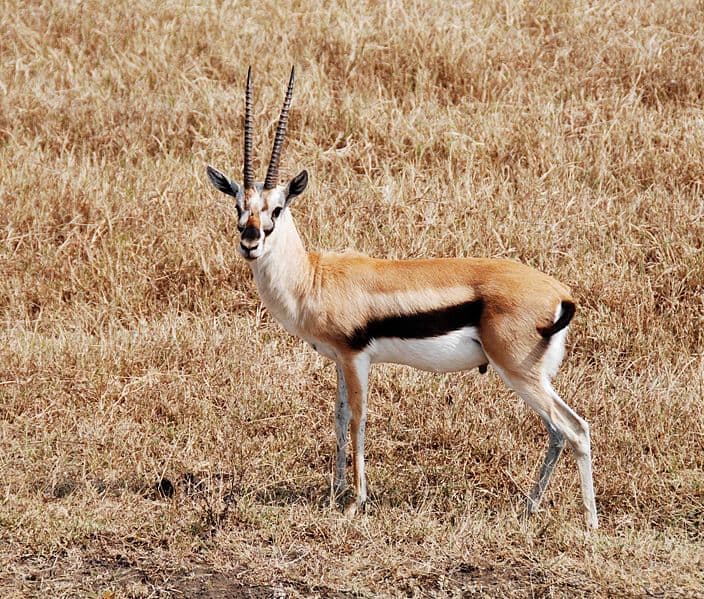
The Thomson’s gazelle lives on Texas ranches across the state.
©The original uploader was Energo at Polish Wikipedia. / Creative Commons – License
Thomson’s gazelles are the most common gazelle species native to East Africa. They were named after Scottish explorer Joseph Thomson in 1897, and people often refer to them as “tommie.” You will mainly find this species in ranches across the state, where people can hunt them year-round.
These gazelles are relatively small and feature sandy brown coats with black bands across their flanks. Their highly ringed horns tilt backward, and the tips curve slightly forward; some may be hornless, and the females’ horns are somewhat fragile. They prefer dry, short grassland habitats but can also thrive in dense woodlands.
2. Aoudad Sheep
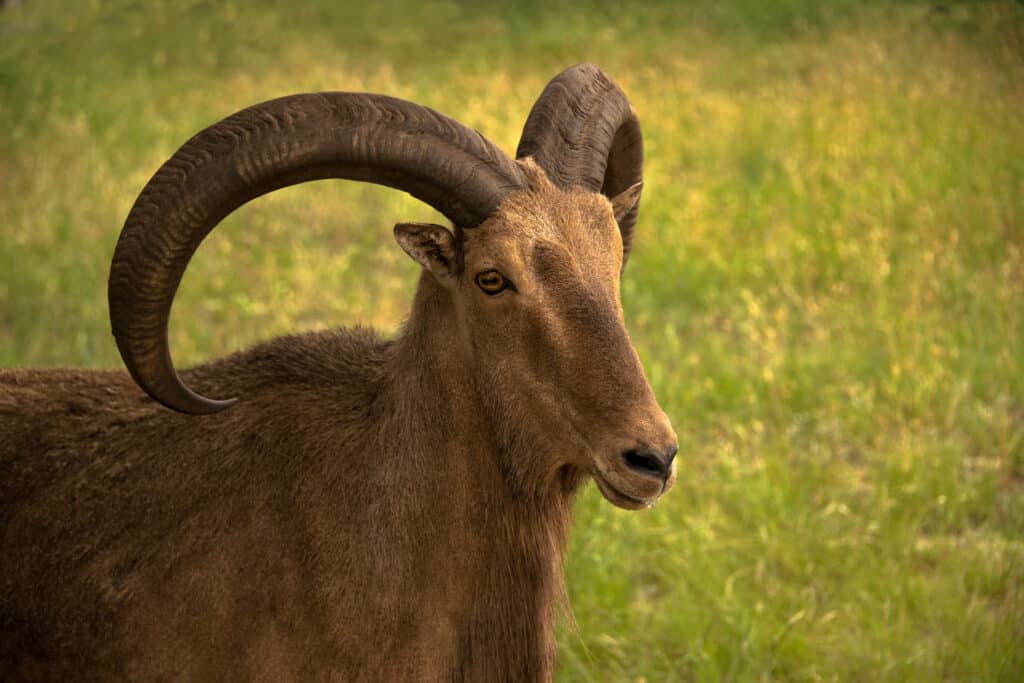
Aoudad sheep are an invasive species in Texas where they roam wild.
©iStock.com/WestwindPhoto
Private land owners and zoos introduced aoudad sheep, also known as Barbary sheep, to the US in the early 1900s. By the 1950s, they were roaming the Texas wild, increasing their numbers to the point that hunting permits became available in the 1960s to control their population. You can identify aoudad sheep by their light brown coats and their smooth triangular cross-section horns.
Originally from the dry mountains of Nothern Africa, they now inhabit the arid mountains of the Southwest, where they compete for food and territory with the native bighorn sheep. Texas has listed these sheep as an invasive species due to their threat to mule deer, bighorn sheep, and wheat farmers.
3. Feral Pig
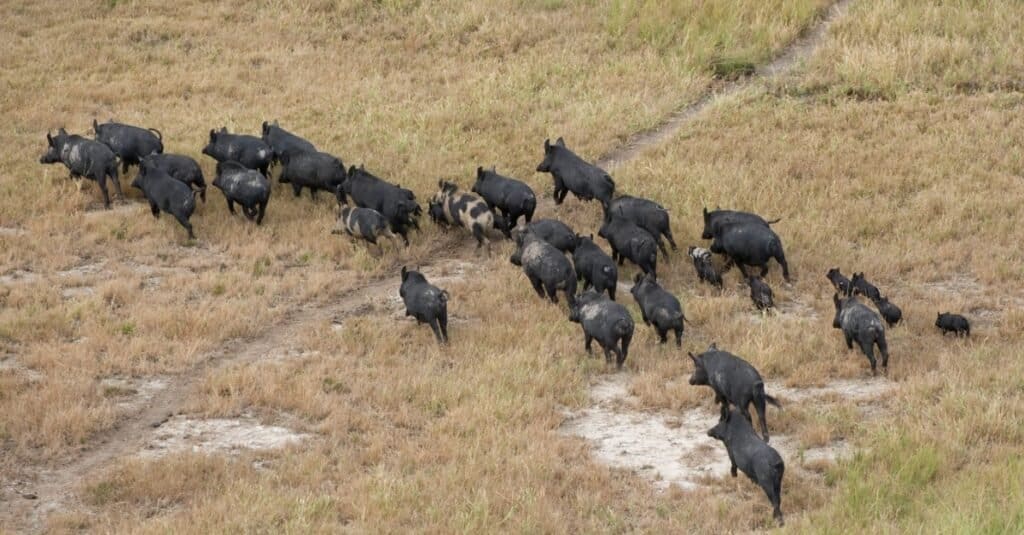
There are over 4 million non-native wild pigs in Texas.
©iStock.com/JohnCarnemolla
Feral pigs are free-ranging exotics in Texas, first introduced by the Spaniards in 1539 when they landed in Florida. The explorers often left their pigs behind as they wandered the continent, leading to groups of wild pigs.
People also began bringing Eurasian wild boars over to the mainland, and now there are hybrids of feral hogs and wild boars. Today Texas has over 4 million wild pigs (in all their forms) running around the state, sometimes causing problems for endangered species like ground-nesting birds.
4. Axis Deer
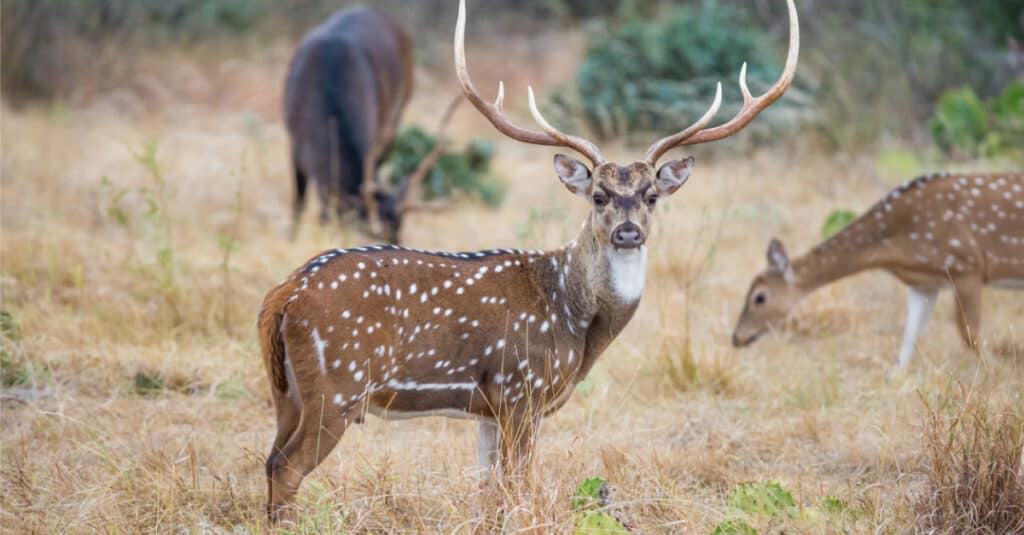
Axis deer inhabit the Edwards Plateau region.
©iStock.com/GizmoPhoto
Axis deer are native to India, Nepal, and Sri Lanka and easily recognizable by their orange coats with white spots. These exotic deer have been in Texas since 1932, with self-sustaining herds roaming around Central and South Texas by 1988. They heavily populate the Edwards Plateau region, where the terrain is similar to India.
You can find them feeding on grasses in open fields near secluded woodland areas with plenty of natural covering. They prefer warm weather and thrive in the Texas heat but are typically more active during dusk and dawn. Exotic deer in Texas are invasive species as they compete for food and territory with the native whitetail deer; Texas has permitted legal hunting of axis deer.
5. Emu
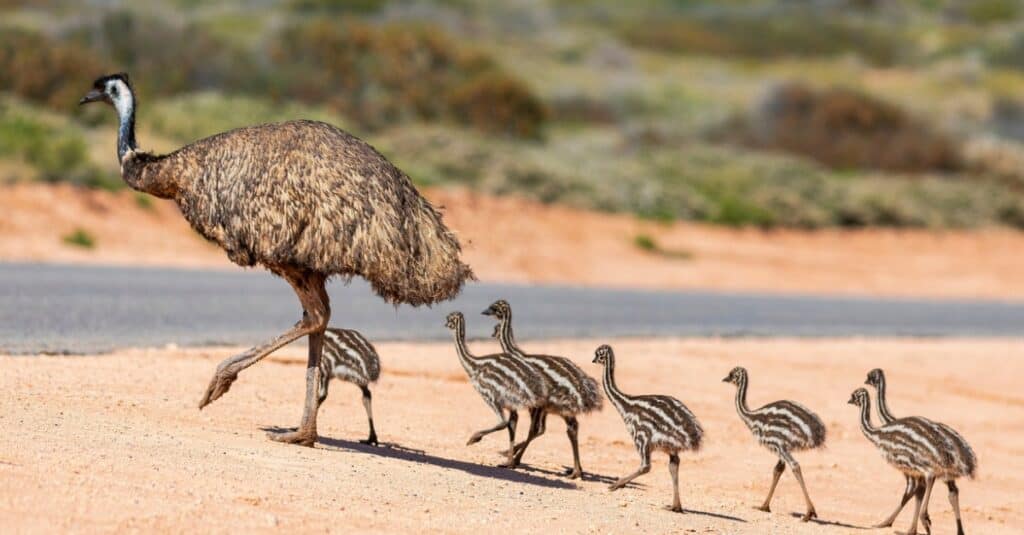
Emus roam freely throughout Texas’s woodlands and forests.
©iStock.com/JensenChua
Emus are brown flightless birds with long legs and necks, reaching up to six feet tall. They are native to Australia but now thrive in hunting ranches and the Texas wild. In the 1980s, Texans decided they wanted a healthier alternative to meat and began raising emus on farms. When they realized no one was buying the emus, they set most of them loose. Today, many roam freely, even blocking roadways and causing hilarious chase scenes. They spend their days foraging for food in arid regions near woodlands and forests.
6. Blackbuck Antelope
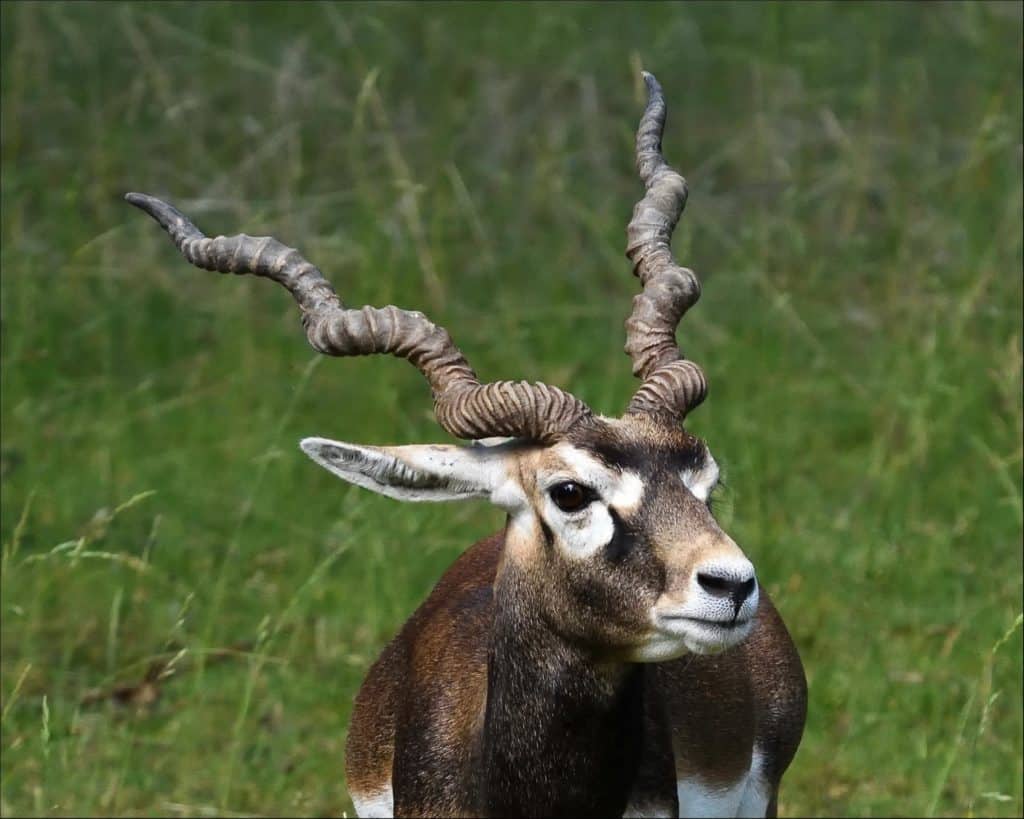
There are 20,000 blackbuck antelopes living in the Texas wild.
©Alexandr Junek Imaging/Shutterstock.com
The male blackbuck is a medium-sized antelope with ringed corkscrew horns and black coloration and white undersides. Females don’t typically have horns and feature tan coats with white underparts. Blackbuck antelopes are native to India and Pakistan but made their way to the Edward’s Plateau region in Texas in 1932.
Today there are around 20,000 living in the wild, mainly in this same area. They graze in open grassland with plenty of brush nearby for cover and foraging. Many also live on ranches in Hill Country and in South Texas, where people can trophy hunt despite their near-threatened status.
7. Sika Deer

Sika deer like the warm piney forests in Texas.
©iStock.com/Elena Tcykina
This deer species originated in Japan and look similar to axis deer, except they have a white patch on their rump; in winter, they turn gray. Sika like to inhabit forests with lush vegetation and plenty of places to hide. They especially like the piny Texas forests where it’s warm.
Ranchers initially brought them to the state for game food, but their population exploded in the wild, and they are now an invasive species. This species is an aggressive forager, readily destroying farmers’ crops and other native vegetation. They are also mating with other deer species, which can be detrimental to native populations.
8. Nilgai
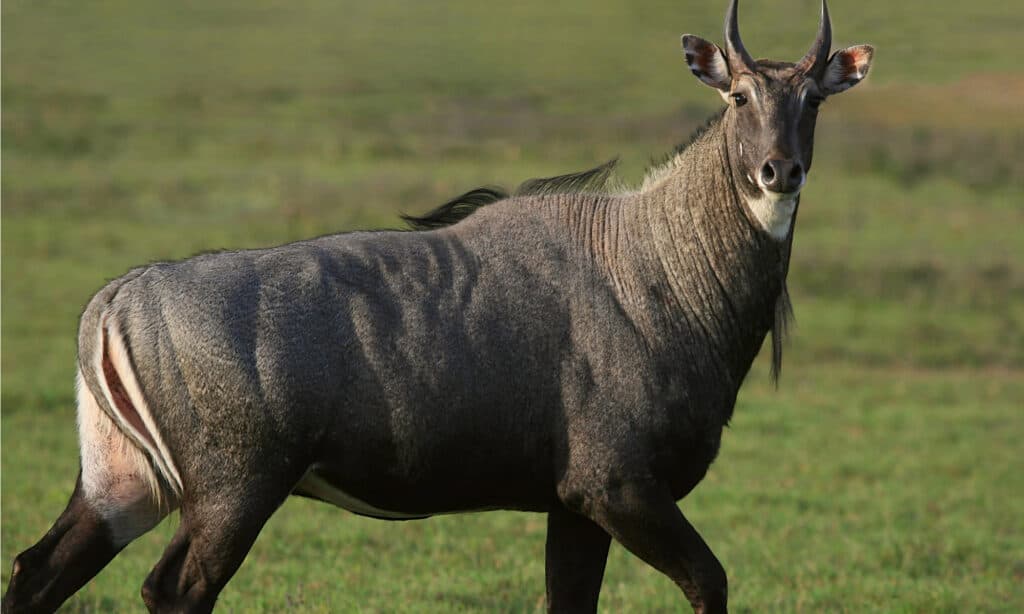
Nilgai are the largest antelopes in Asia.
©Raymond Pauly/Shutterstock.com
Nilgai are native to Northern India and are the largest antelopes in Asia; males can weigh 700 pounds and grow to six feet long (4.5 feet shoulder height). These sturdy antelopes have bluish-gray coats, white patches, sloping backs, and short, smooth horns.
These creatures look out of place as they graze the coastal prairies of South Texas. Over 30,000 wild nilgai herds roam the areas between Corpus Christi and the lower Rio Grande Valley. They like shrubland forests and grassy plains; you may also see them on agricultural land. These antelopes have a bad rap in India for decimating crops, but for now, they are not on the Texas invasive species list.
Discover more exotic animals in Texas (and the rest of the country) in future posts!
Summary of 8 Exotic Animals in Texas
| Rank | Animal |
|---|---|
| 1 | Thomson’s Gazelle |
| 2 | Aoudad Sheep |
| 3 | Feral Pig |
| 4 | Axis Deer |
| 5 | Emu |
| 6 | Blackbuck Antelope |
| 7 | Sika Deer |
| 8 | Nilgai |
What are the Most Dangerous Animals in Texas?

The American alligator is one dangerous reptile you wouldn’t want to come across in Texas.
©Jim Schwabel/Shutterstock.com
We’ve looked at some exotic animals native to Texas. There are others that are downright dangerous. Texas is home to multiple venomous animals, for one, whose bites can inflict pain, swelling, or even symptoms that can kill some humans. There are a few other animals to be feared due to their aggressive natures, or simply being in the wrong place at the wrong time. Some dangerous animals in Texas include:
- Venomous Snakes Rattlesnake species in Texas include the western Massasauga, mottled rock rattlesnake, blacktail rattlesnake, Mojave rattlesnake, timber rattlesnake, and the western diamondback. Other venomous snakes are coral snakes, copperheads, and cottonmouths.
- Alligators These dangerous reptiles do inhabit some lakes and coastal areas in Texas, and are occasionally responsible for attacking humans and pets. There are an estimated 400,000 to 500,000 alligators in Texas.
- Feral Hogs Feral hogs do not commonly attack humans but are capable of it, and there was one recent report of a woman being killed by some in Texas. These wild beasts inhabit East, South, and Central Texas and are considered invasive and dangerous. They can get up to three feet high at the shoulder and weigh from 100 to 400lbs.
- Deer If you’re surprised to see this animal on the list, we don’t blame you, as deer aren’t inherently aggressive animals. However, they are the number one animal responsible for causing vehicular accidents in the state of Texas, so in that sense, these animals are dangerous.
The photo featured at the top of this post is © Vladimir Wrangel/Shutterstock.com
Thank you for reading! Have some feedback for us? Contact the AZ Animals editorial team.






